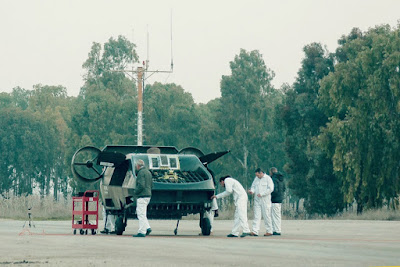 |
| Flying Cars & Hover Technology |
We've all seen the concept in movies, from Back to the Future Series, Total Recall, to The 5th Element, a self flying vehicle artificially controlled by itself. Furthermore, its additional features usually include being able to fly between buildings at top speeds, yet can also gently come to a hover for boarding. Nine years ago when the concept was pushed into design, all of those features seemed out of reach. However, now in 2016 it has become a reality. Meet the Air Mule aka the Cormorant.
Due to it's current military application, the project's flight data was kept secret, but the first official successful flight occurred in January of this year. The makers of Air Mule Drone, Urban Aeronautics, also stated that it's name will change to "the Cormorant."
The complete flight, which lasted roughly two minutes, experienced a few errors. According to test results, the vehicle’s Flight Control System made the decision to land too early. This caused an abnormal wobble just before the vehicle completed the landing. The Air Mule's flight control systems are internally managed by flight management system which acts like a top level instructor. In other words, like an experienced Pilot overseeing a Pilot in training. Furthermore, the management system makes its decisions by an array of sensors, which then relay the commands (or corrections) to the control systems.
Main Sensors used:
- Laser Altimeters
- Radar Altimeter
- Inertial Sensors
- Electro-Optic Payload Camera
It's unique compact design makes it the only unmaned aircraft to have it's rotors mounted inside the craft. However, it's unique design is also one of the main causes of their flight errors. At this moment, the Cormorant drone can fly at a ceiling of 18,000 feet, while exceeding speeds of 100mph safely. It has also proved resilient, withstanding severe winds of up to 40 knots. Spanning a size of 20 feet long, by 7.5 feet tall this is no pizza delivery drone. In total, Urban Aeronautics have stated that they have carried out over 200 test flights, with it's first un-tethered test flight dating back to December of 2015.







